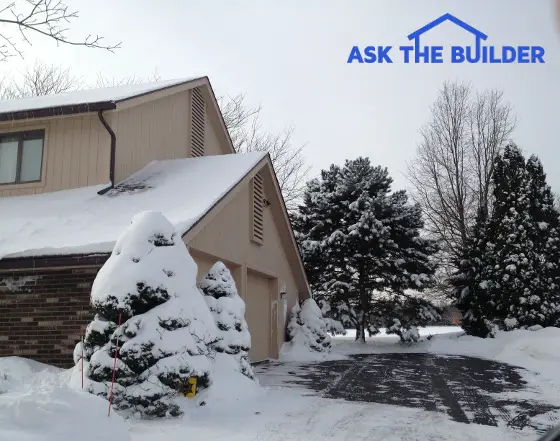Attic Ventilation Of Old

See these monster attic ventilation baffles? You can’t have too much attic ventilation. (C) Copyright 2017 Tim Carter
Attic Ventilation
DEAR TIM: I’m so confused. I’ve spent hours online reading all sorts of stuff about attic ventilation. There’s all sorts of conflicting information out there. Who am I to believe? I’m building a new home and want to get it right and not suffer mold in my attic, excessive heat, etc. The house I grew up in had a traditional stand-up attic and it never had any issues. It was cold in the winter up there and hot in the summer, but no mold. In your opinion, what’s the best attic ventilation? What would you do if you were building a new home? Melissa T., Calera, AL
DEAR MELISSA: I’m as discouraged as you are. Much of the information out there on the Internet about home improvement, home maintenance and the simple physics of houses is incorrect. You can’t imagine how many questions a day I get at my AsktheBuilder.com website just like yours. Other homeowners like you are frustrated and confused about what to do in all sorts of situations.
There are many reasons for the misinformation. First and foremost you don’t have to have any formal training to work within the building and remodeling industry.
A frightening growing trend are all the hobby bloggers you run into on the Internet. These are people with normal day jobs that have an interest in home improvement or they’ve painted a bedroom thinking that makes them an expert.
The true definition of a professional is a person that works for others for a fee and has done it for years accumulating lots of hands-on experience. Always look at the About Us page at a website and be sure the website owner is a professional.
Then you’ve got the workers out there that have been doing things the wrong way for thirty years and they’re polluting the minds of young workers. Some of these bad eggs leave comments at websites or have their own websites.
Finishing concrete is a perfect example. Some concrete finishers feel that you’re supposed to add water to concrete as you place and finish it. It does make it easier to trowel, I’ll grant you that!
But the added water dilutes the Portland cement at the surface causing the concrete to spall and fail long before its time. I could give you hundreds of examples of other incorrect building practices, but let’s talk attic ventilation.
If you want to see the best way to ventilate an attic in a new home, then just go take a drive in the country near where you live down South. I’m sure you’ll find a chicken farmer in a short amount of time.
Look at the gable ends of a giant chicken house where thousands of chickens are housed. The entire triangular ends at each end of the roof are almost always completely louvered. The farmers need as much air moving through the attic as possible to keep the chickens cool.
You can’t have too much attic ventilation is the simple answer. Air constantly moving through an attic will help prevent mold. Your old home never had mold because old homes were so drafty the water vapor was constantly being transported outdoors or it evaporated off the sheathing surfaces before mold could grow.
The continuous ridge vent rage continues to dominate the ventilation discussion. The only problem is that hot air doesn’t go down. All ridge vents are designed like a plumbing s trap causing hot air to go down before it goes up. This defies physics.
If your new home has gable ends, install large slanted louvers. You want excellent continuous soffit vents as well. Turbine vents that spin with a puff of breeze suck vast amounts of air out of attic spaces.
You’ll never solve the heat issue in attics because of the physics of infrared heat. When the sun strikes a roof, it heats up the shingles, the wood sheathing and the attic framing. The temperatures of these things easily approaches 160 F. I know as I took the temperature of my own roofing materials.
These building materials act like toaster coils. They radiate heat into the attic. You can’t stop it unless you use some sort of radiant barrier under the framing that bounces the heat back out to the outdoors.
The radiant barriers work great for a year or so, but once they become dusty their efficiency drops like a rock from a cliff. You can try to cool an attic using giant powered attic ventilation fans just like the chicken farmers use. Tens of thousands of cubic air a minute passing through your attic are needed to make a slight difference and this air will just be whatever the outdoor air temperature is.
Forget about the solar-powered attic fans. They simply don’t move enough air to lower the temperature in an attic. I know as I’ve tested several.
Column 1227